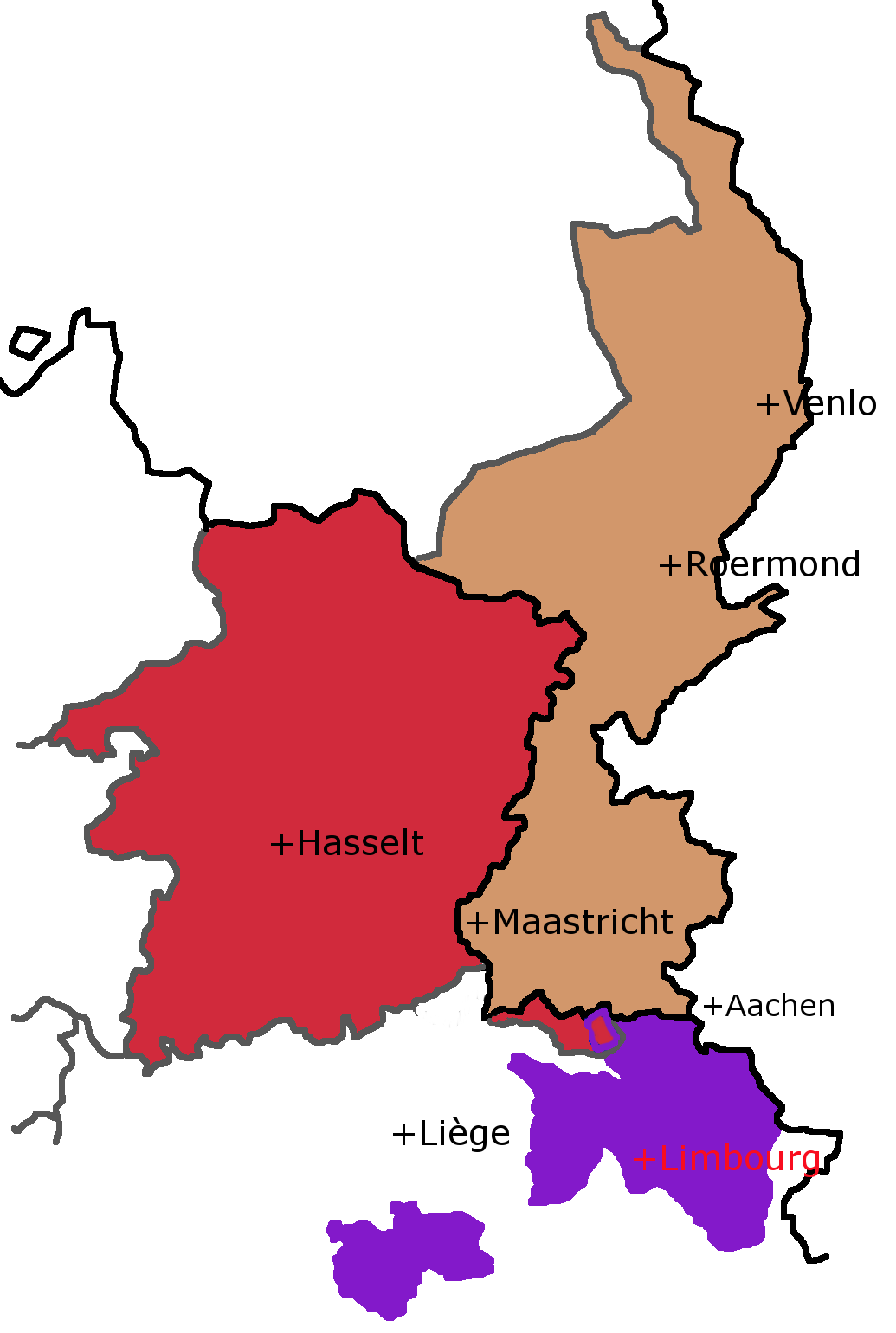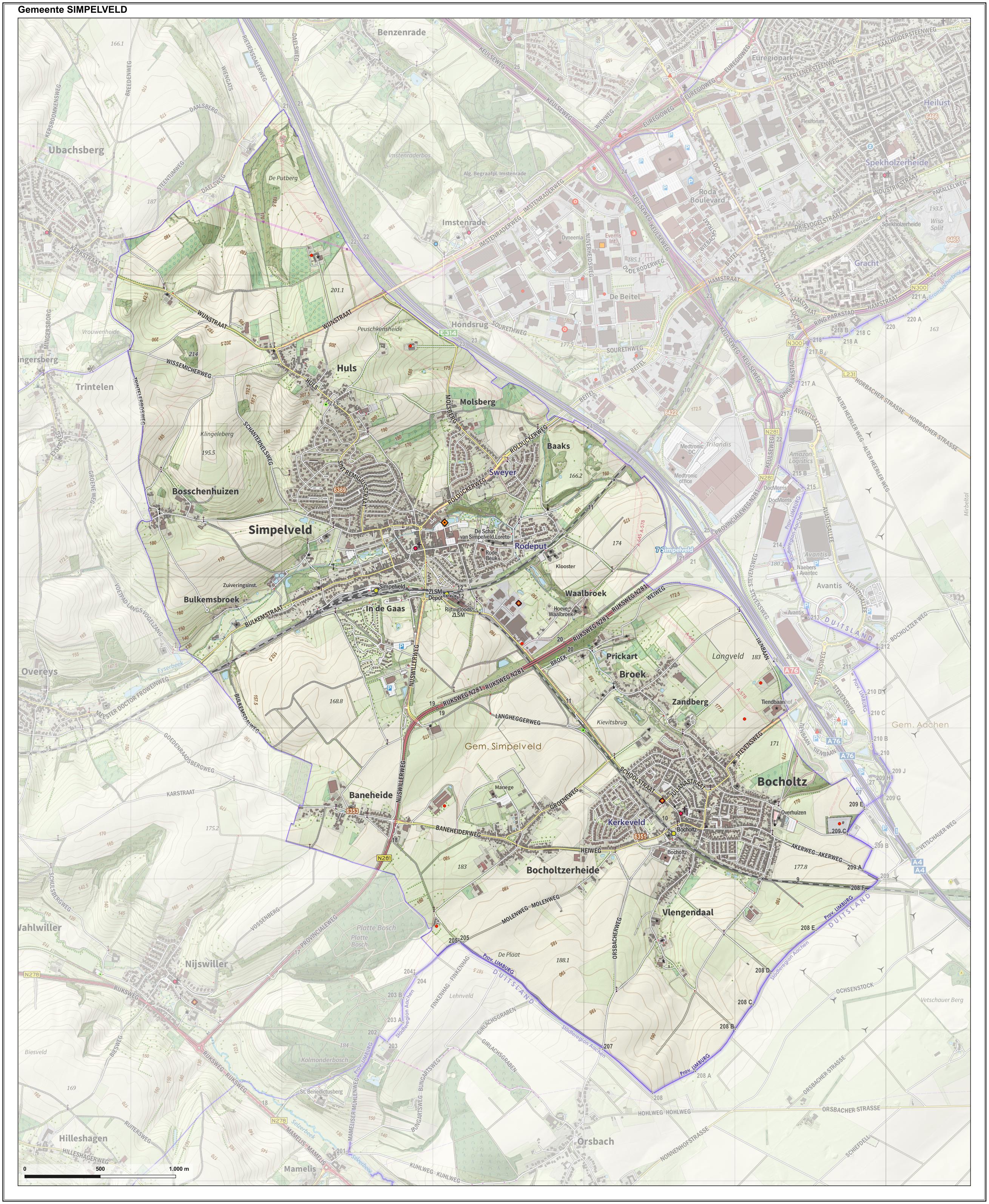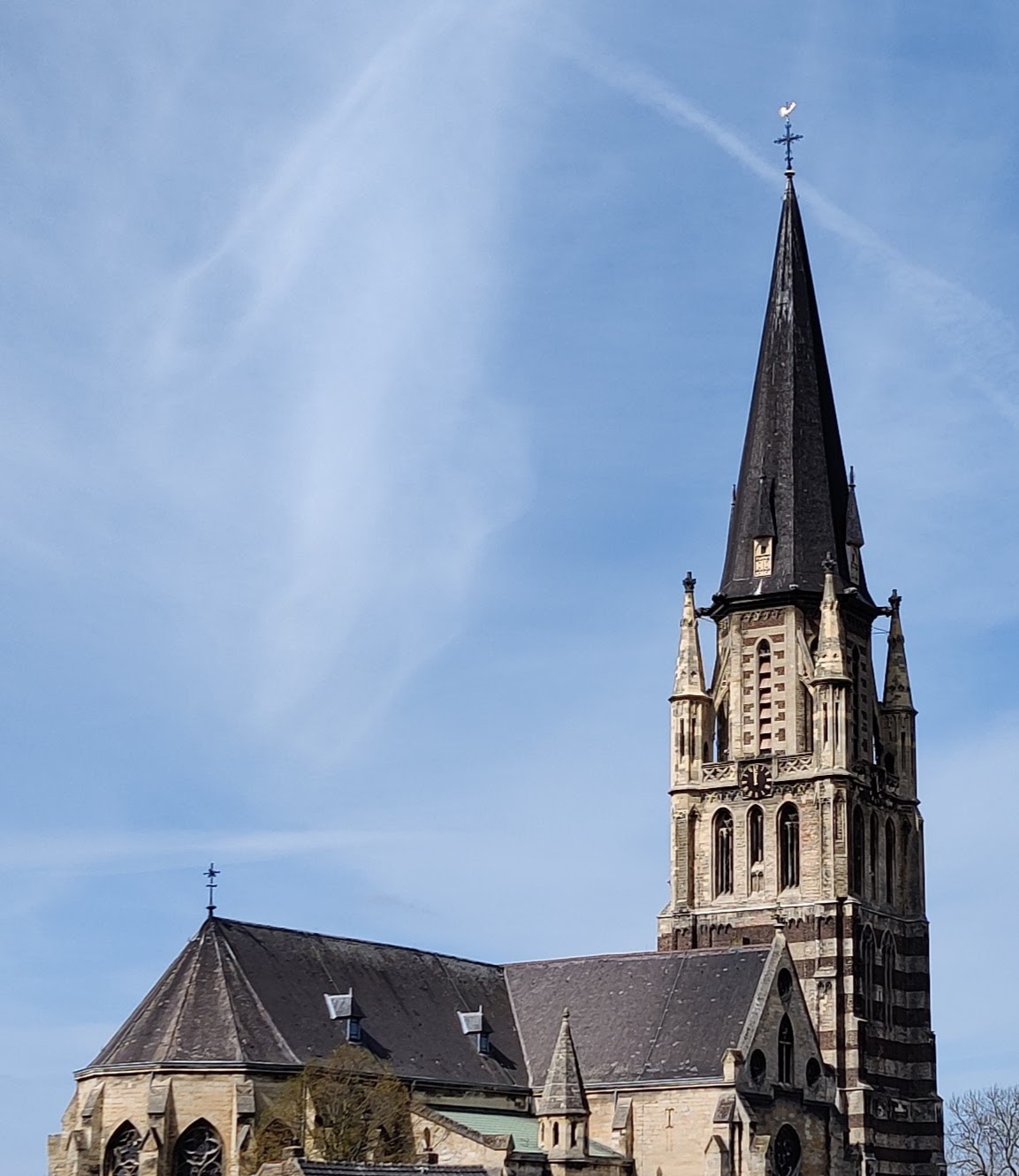|
Schaesberg
Schaesberg (; ) is a neighbourhood of Landgraaf and former village in the Netherlands, Dutch province of Limburg (Netherlands), Limburg. History The village was first mentioned in 16th century as Gaesberg. The etymology is unknown. Schaesberg developed in the 17th century between the Schaesberg and Strijthagen castles from the 13th century. In 1618, it became a ''heerlijkheid''. In 1661, it became part of the Spanish Netherlands, and in 1713 an enclave of the Austrian Netherlands within the Dutch Republic. In 1785, it became part of the Dutch Republic. The Catholic Peter and Paul Church was founded in 1648. In 1699, it was expanded and a tower was attached. Strijthagen Castle was built in 1530, but probably had a 13th century predecessor. It received its current form around 1700. Schaesberg castle was abandoned in 1733, and only ruins remain. Schaesberg was home to 710 people in 1840. A railway station was built in 1896 on the Sittard to Herzogenrath (Germany) railway line. I ... [...More Info...] [...Related Items...] OR: [Wikipedia] [Google] [Baidu] |
Landgraaf
Landgraaf (; ) is a municipality in southeastern Limburg, Netherlands, forming part of the Parkstad Limburg agglomeration. ''SnowWorld'' is the largest indoor ski piste in Europe. Population centres * Nieuwenhagen * Schaesberg * Ubach over Worms Topography ''Dutch topographic map of the municipality of Landgraaf, June 2015'' Attractions A pop music festival called Pinkpop is held annually on the Pentecost Pentecost (also called Whit Sunday, Whitsunday or Whitsun) is a Christianity, Christian holiday which takes place on the 49th day (50th day when inclusive counting is used) after Easter Day, Easter. It commemorates the descent of the Holy Spiri ... weekend in Schaesberg, a town in Landgraaf. Landgraaf is home to the largest indoor ski piste in Europe, called SnowWorld. Notable natives * Johan Kremers (born 1933 in Nieuwenhagen) a Queen's Commissioner of Limburg from 1977 to 1990 * Harry Kempen (1937 in Nieuwenhagen – 2000) a cultural psychologist and ac ... [...More Info...] [...Related Items...] OR: [Wikipedia] [Google] [Baidu] |
Ubach Over Worms
Ubach over Worms () is a former municipality located in the southeast of the Netherlands, in the province of Limburg. In 1982 it was incorporated into the new municipality of Landgraaf along with Schaesberg and Nieuwenhagen. The German name for this part of Landgraaf is "Waubach". It is believed the latter name derives from ''Waldbach'', which is German for "woodland creek", referring to the local Worm Worms are many different distantly related bilateria, bilateral animals that typically have a long cylindrical tube-like body, no limb (anatomy), limbs, and usually no eyes. Worms vary in size from microscopic to over in length for marine ... stream. This name is said to have later become corrupted to Waubach. Ubach over Worms as a municipality dates back to 1795. It contained the five hamlets; Groenstraat, Rimburg, Waubach, Lauradorp and Abdissenbosch. After the French occupation the Kingdom of the Netherlands was formed and the Overworms area was separated from the Germa ... [...More Info...] [...Related Items...] OR: [Wikipedia] [Google] [Baidu] |
Limburg (Netherlands)
Limburg (; ), also known as Dutch Limburg, is the southernmost of the twelve provinces of the Netherlands. It is bordered by Gelderland to the north and by North Brabant to the west. Its long eastern boundary forms the border with the German state of North Rhine-Westphalia. To the west is the border with the Belgian province of Limburg, part of which is delineated by the river Meuse. To the south, Limburg is bordered by the Belgian province of Liège. The Vaalserberg is the extreme southeastern point, the tripoint of the Netherlands, Germany, and Belgium. Limburg had a population of about 1,128,000 in January 2023. Its main municipalities are the provincial capital Maastricht (population 120,837 as of January 2022), Venlo (population 102,176) in the northeast, as well as Sittard-Geleen (population 91,760, bordering both Belgium and Germany) and Heerlen (population 86,874) in the south. More than half of the population, approximately 650,000 people, live in the south of Limb ... [...More Info...] [...Related Items...] OR: [Wikipedia] [Google] [Baidu] |
Saint Peter
Saint Peter (born Shimon Bar Yonah; 1 BC – AD 64/68), also known as Peter the Apostle, Simon Peter, Simeon, Simon, or Cephas, was one of the Twelve Apostles of Jesus and one of the first leaders of the Jewish Christian#Jerusalem ekklēsia, early Christian Church. He appears repeatedly and prominently in Gospel#Canonical gospels, all four New Testament gospels, as well as the Acts of the Apostles. Catholic Church, Catholic and Eastern Orthodoxy, Orthodox tradition treats Peter as the first bishop of Rome – or List of popes, pope – and also as the first bishop of Antioch. Peter's History of the papacy, leadership of the early believers is estimated to have spanned from AD 30 or 33 to his death; these dates suggest that he could have been the longest-reigning pope, for anywhere from 31 to 38 years; however, this has never been verified. According to Apostolic Age, Christian tradition, Peter was crucified in Rome under Emperor Nero. The ancient Christian churches all venera ... [...More Info...] [...Related Items...] OR: [Wikipedia] [Google] [Baidu] |
Austrian Netherlands
The Austrian Netherlands was the territory of the Burgundian Circle of the Holy Roman Empire between 1714 and 1797. The period began with the acquisition by the Austrian Habsburg monarchy of the former Spanish Netherlands under the Treaty of Rastatt in 1714. It lasted until Revolutionary France annexation, annexed the territory after the Battle of Sprimont in 1794 and the Peace of Basel in 1795. Austria relinquished its claim on the province in 1797 through the Treaty of Campo Formio. The Netherlands, previously the Burgundian Netherlands, inherited by the Spanish branch of the Habsburgs, having revolted against the absolutism and centralism of Philip II of Spain, their common sovereign, launched a war which led in fact, in 1568, to the formation in the north of the Republic of the United Provinces, a new state whose independence would finally be recognized by the King of Spain in 1648 during the Treaty of Münster (October 1648), Treaty of Münster, and in the south of a group o ... [...More Info...] [...Related Items...] OR: [Wikipedia] [Google] [Baidu] |
Populated Places In Limburg (Netherlands)
Population is a set of humans or other organisms in a given region or area. Governments conduct a census to quantify the resident population size within a given jurisdiction. The term is also applied to non-human animals, microorganisms, and plants, and has specific uses within such fields as ecology and genetics. Etymology The word ''population'' is derived from the Late Latin ''populatio'' (a people, a multitude), which itself is derived from the Latin word ''populus'' (a people). Use of the term Social sciences In sociology and population geography, population refers to a group of human beings with some predefined feature in common, such as location, race, ethnicity, nationality, or religion. Ecology In ecology, a population is a group of organisms of the same species which inhabit the same geographical area and are capable of interbreeding. The area of a sexual population is the area where interbreeding is possible between any opposite-sex pair within the ... [...More Info...] [...Related Items...] OR: [Wikipedia] [Google] [Baidu] |
Nieuwenhagen
Nieuwenhagen is a former village in the Dutch province of Limburg. It is now a part of the municipality of Landgraaf Landgraaf (; ) is a municipality in southeastern Limburg, Netherlands, forming part of the Parkstad Limburg agglomeration. ''SnowWorld'' is the largest indoor ski piste in Europe. Population centres * Nieuwenhagen * Schaesberg * Ubach over W .... Nieuwenhagen was a separate municipality until 1982, when it became a part of Landgraaf. Notable natives * Harry Kempen * Joep Lange References Populated places in Limburg (Netherlands) Former municipalities of Limburg (Netherlands) Landgraaf {{LimburgNL-geo-stub ... [...More Info...] [...Related Items...] OR: [Wikipedia] [Google] [Baidu] |
Simpelveld
Simpelveld (; ) is a municipality and a town in the southeastern Netherlands. It is part of the municipal cooperative unit Parkstad Limburg. Simpelveld is part of the ''Mergelland'', named after the presence of chalk (mergel), hill country popular with tourists. The Mergellandroute passes through the town. The population centre of Simpelveld has 28 national monuments, amongst which are the Oude Molen and the Saint Remigius Church. Simpelveld has a heritage railway station and is the home base of the South Limburg Railway Company. On one weekend in October there is a Day Out with Thomas from the children's television series Thomas and Friends. Population centres *Bocholtz *Simpelveld Besides these official centres there are other hamlets which fall under the municipality: Religion The municipality has two churches within its borders: *James the Greater Church in Bocholtz * Saint Remigius Church in Simpelveld The city also has two monasteries, these are * the Lo ... [...More Info...] [...Related Items...] OR: [Wikipedia] [Google] [Baidu] |
Herzogenrath
Herzogenrath (; ; ) is a municipality in the district of Aachen in the German state of North Rhine-Westphalia. It borders the Dutch town of Kerkrade, the national border in one section running along the middle of a main road and even directly through the centre of the cross-border Eurode office complex. History Herzogenrath began in the 11th century as a settlement called ''Rode'' near the river Wurm. In 1104, Augustinian monks founded an abbey, called ''Kloosterrade'', to the west of this settlement. It became s-Hertogenrode or s-Hertogenrade (Dutch: ''the Duke's Rode'') after the Duchy of Brabant took control of the region; in French it was called Rolduc (''Rode-le-Duc''). As is the case for many parts of Duchy of Brabant, Herzogenrath changed hands several times in the last few centuries. Together with the rest of the Southern Netherlands, it was under Spanish control from 1661, Austrian between 1713 and 1795 and French between 1795 and 1813. In 1815, when the ... [...More Info...] [...Related Items...] OR: [Wikipedia] [Google] [Baidu] |
Sittard
Sittard (; ) is a city in the Netherlands, situated in the southernmost province of Limburg. The town is part of the municipality of Sittard-Geleen and has almost 37,500 inhabitants in 2016. In its east, Sittard borders the German municipality of Selfkant (in the state of North Rhine-Westphalia). The city centre is located at 45 m above sea level. History Archaeological discoveries have dated the first settlement in the Sittard area around 5000 B.C. Present day Sittard is assumed to have been founded around 850 A.D. and to have been built around a motte. Sittard was first mentioned in 1157. It was granted city rights by the Duke of Limburg in 1243. In 1400 it was sold to the Duchy of Jülich, and remained in its possession until 1794. The city was destroyed and rebuilt repeatedly, due to fires and various conflicts during the 15th-17th century. It was a stronghold until it was largely destroyed in 1677, during the Franco-Dutch War. Under French occupation (1794-1814), Si ... [...More Info...] [...Related Items...] OR: [Wikipedia] [Google] [Baidu] |
Dutch Republic
The United Provinces of the Netherlands, commonly referred to in historiography as the Dutch Republic, was a confederation that existed from 1579 until the Batavian Revolution in 1795. It was a predecessor state of the present-day Netherlands and the first independent Dutch people, Dutch nation state. The republic was established after seven Dutch provinces in the Spanish Netherlands Dutch Revolt, revolted against Spanish Empire, Spanish rule, forming a mutual alliance against Spain in 1579 (the Union of Utrecht) and declaring their independence in 1581 (the Act of Abjuration). The seven provinces it comprised were Lordship of Groningen, Groningen (present-day Groningen (province), Groningen), Lordship of Frisia, Frisia (present-day Friesland), Lordship of Overijssel, Overijssel (present-day Overijssel), Duchy of Guelders, Guelders (present-day Gelderland), lordship of Utrecht, Utrecht (present-day Utrecht (province), Utrecht), county of Holland, Holland (present-day North Holla ... [...More Info...] [...Related Items...] OR: [Wikipedia] [Google] [Baidu] |
Heerlijkheid
A ''heerlijkheid'' (a Dutch language, Dutch word; pl. ''heerlijkheden''; also called ''heerschap''; Latin: ''Dominium'') was a landed estate that served as the lowest administrative and Judiciary, judicial unit in rural areas in the Dutch-speaking Low Countries before 1800. It originated as a unit of lordship under the Feudalism, feudal system during the Middle Ages. The English equivalents are ''Manorialism, manor'', ''seigniory'' and ''lordship''.. The translation used by J.L. Price in ''Dutch Society 1588-1713'' is "manor"; by David Nicholas in ''Medieval Flanders'' is "seigneury". The German equivalent is ''Herrschaft''. The ''heerlijkheid'' system was the Dutch version of manorialism that prevailed in the Low Countries and was the precursor to the modern Municipalities of the Netherlands, municipality system in the Netherlands and List of municipalities of the Flemish Region, Flemish Belgium. Characteristics and types A typical ''heerlijkheid'' manor consisted of a village and ... [...More Info...] [...Related Items...] OR: [Wikipedia] [Google] [Baidu] |





